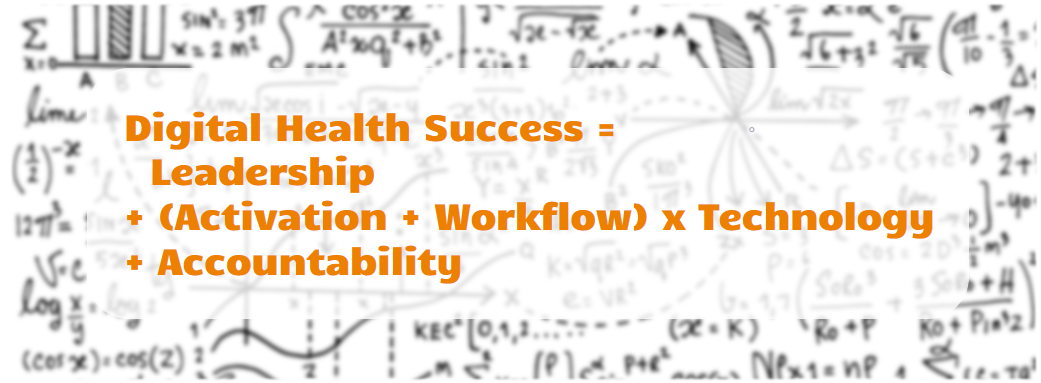We modern humans often have a tendency to make things more complicated and are often hoping for miracle cures or silver bullets.
Take weight loss as an example. Most people intuitively know that the key to losing and maintaining weight is not complicated. We need restful and long-enough sleep; regular movement (you don’t even have to call it exercise); an overall balanced, healthy diet; and manage the inevitable stress well, ideally through a network of human relationships.
Yet this simple approach requires consistency and willpower to avoid giving in to the temptations of: binge watching late into the night, skipping your after-meal walk; getting that fast-food meal or late night treat; and simply letting off the steam when under stress.
What does not work, especially in the long run, are fad diets, diet programs, fancy exercise equipment; or stimulants to numb the stress response. There is no magic pill, no silver bullet.
There is only the consistency in having the willpower to stay disciplined in doing the “boring” things that work.
Technology is not Healthcare’s Panacea
Similarly, technology is not the panacea for healthcare’s challenges.
Yet given the total investment of over $90 billion dollars into digital health in the last 11½ years, it seems that entrepreneurs (and investors) think that technology can solve the many challenges in healthcare.
Now keep in mind that I’m a (German) engineer by vocation and public declaration — I’m in love with technology and I have now made a 10+ year single-mindedly focused career out of it by using, among other things, technology to enable the delivery of extraordinary care (my personal professional mission statement and the mission of my digital health consulting firm).
So before you decry me as a heretic, let me complete my sentence: Technology (alone) is not healthcare’s panacea; but it can serve as a powerful catalyst to solve many of healthcare’s challenges.
Albert Einstein declared that “the problems that exist in the world today cannot be solved by the level of thinking that created them”. Thus to solve problems, we need change. And since healthcare delivery (including diagnosis and treatment) is mostly a service, we need people to change the way they go about their work.
Which brings us back to magic pills and silver bullets.
Getting People to Change (Willingly)
From an evolutionary perspective it made a lot of sense in the age of hunter gatherers to be afraid of change. Too many unconquerable dangers were everywhere; a wrong decision could mean injury or death, often for the whole tribe.
Therefore even in this brand new age of information and knowledge, change is still hard and getting others to change is even harder. Resistance to change is also proportional to one’s level of smartness and education. Which makes, for example, changing clinicians minds exponentially harder.
It is therefore quite understandable that armies of innovators are focusing on technology to offset or to overcome the resistance to change, rather than focusing on the much less complex, but much harder task of changing people’s minds and actions.
In dieting it seems easier to take a pill or subscribe to a program than to actually follow the four simple steps I outlined in the beginning. Thus introducing a digital health solution seems easier and much more appealing as well.
But to succeed in the long run, digital health technology should only be seen as the catalyst, the dangling carrot, the thing that entices people to become curious, to become interested and engaged.
So what are the corollary key tactics to create change in healthcare diagnosis and treatment? They are leadership, activation, workflow, and accountability — enabled and supported by technology.



Four Simple Tactics
Leadership: Any change starts with leadership — whether that leadership comes from the top or from within. Without a driving force that brings positional, expert, or even enthusiasm authority, no change effort will succeed.
Activation: Similarly to healthcare’s evolved understanding over the past 25 years on getting patients to participate in their care (going from compliance to adherence to engagement to activation), the concept of “activating” is critical to instill change. People need to be motivated to change – they need to be aware of the need to change and have the desire to make that change.
Here, technology can serve as the catalyst, as the shiny new object, the magic pill that gets people curious and interested. It’s a door opener or eye opener, as in “Hey, that’s cool”. One of our clients just got 30 Virtual Reality sets through a grant to use in treating certain behavioral health diagnoses. This opens people’s minds to the possibility of integrating technology into their care, especially beyond conversation, medication, and question-based assessments.
Workflow: Since everything we do in healthcare is a process that requires multiple people to follow certain steps in a certain order, the definition and communication of the flow of work is critical. Who does what, when, where, and how needs to be defined (whereas each step’s “why” speaks to the activation of the people involved in the process).
When technology is used in a workflow, it is never used in an isolated step. There are steps that happen before the technology is used and steps that happen afterward. Since many technologies involve information, someone needs to put that information in and someone on the other side will use that information to make decisions. All of these steps need to be defined — before, after, and – of course – the use of the technology.
Accountability: The most critical and often overlooked tactic is to provide accountability and reinforcement to ensure that the change continues to take hold. In the face of adversity or complications, it is very easy for people to go back to their old habits and their old ways – which are very familiar, have been mastered and are thus much more enjoyable.
An effective mindset of accountability is not merely about monitoring the performance and taking corrective actions. Rather accountability is about communication about the need for change and about providing support including education and training on the technology and on the workflows.
An Equation for Solving Healthcare’s Challenges
As with the weight management example above, these simple tactics require willpower, discipline and consistency to achieve the desired changes.
Putting it all together, the formula for solving healthcare’s challenges is technology-enabled activation and workflows, with accountability provided by leadership .
When all of these elements are in place, then the right technology actually does become a magic pill.








To receive articles like these in your Inbox every week, you can subscribe to Christian’s Telehealth Tuesday Newsletter.
Christian Milaster and his team optimize Telehealth Services for health systems and physician practices. Christian is the Founder and President of Ingenium Digital Health Advisors where he and his expert consortium partner with healthcare leaders to enable the delivery of extraordinary care.
Contact Christian by phone or text at 657-464-3648, via email, or video chat.







Leave A Comment